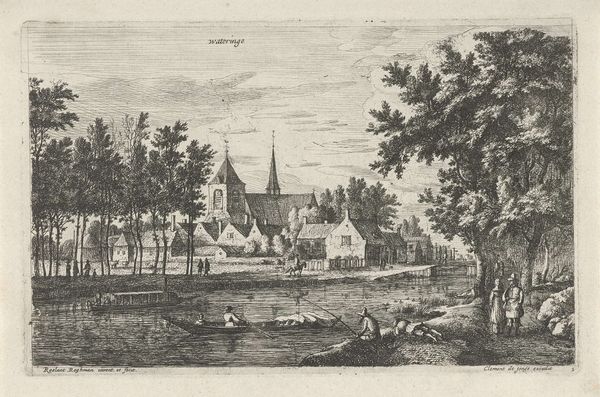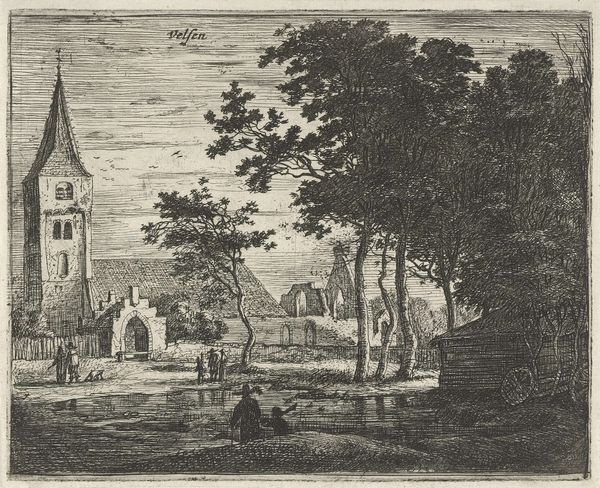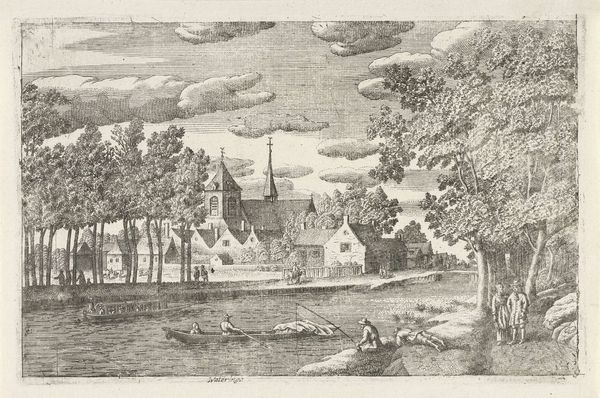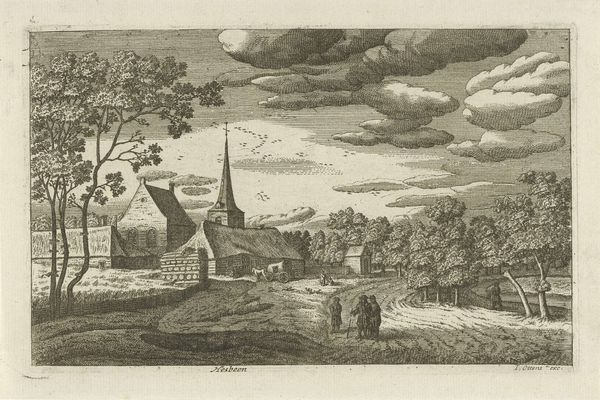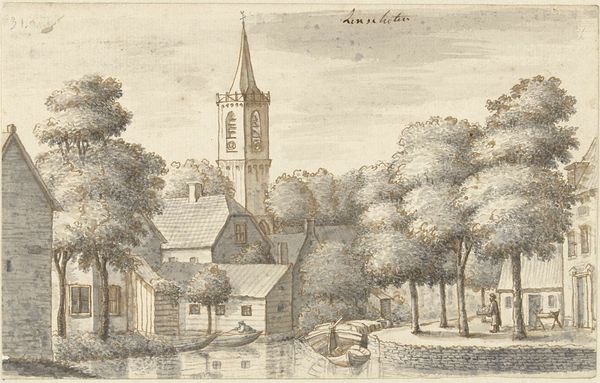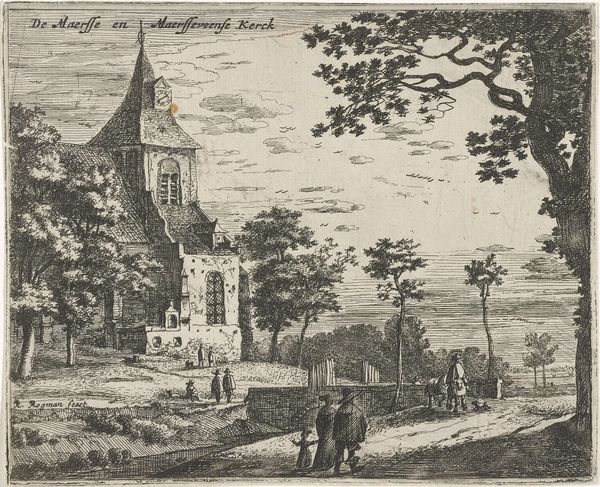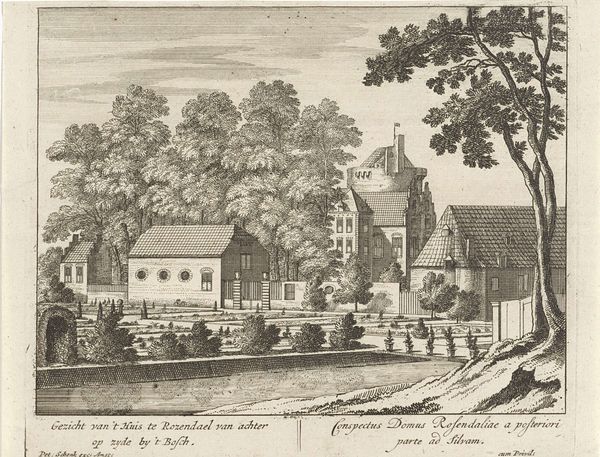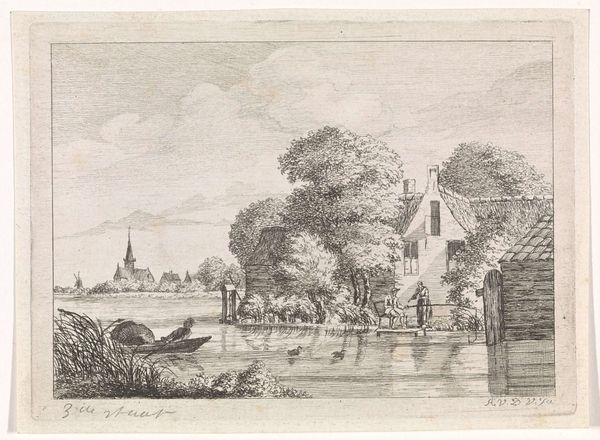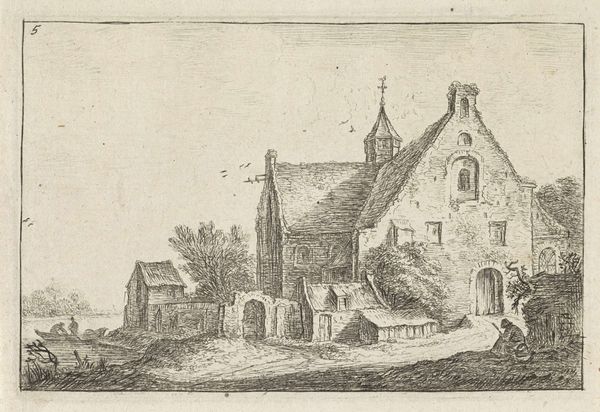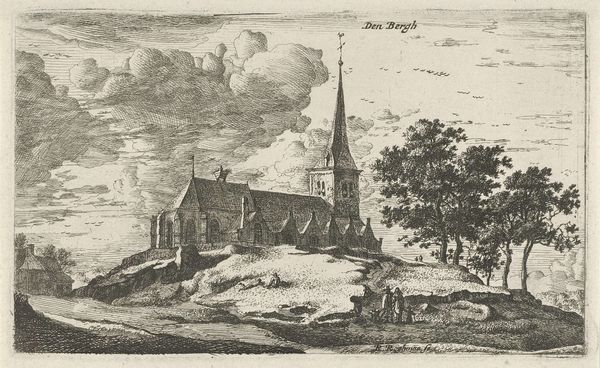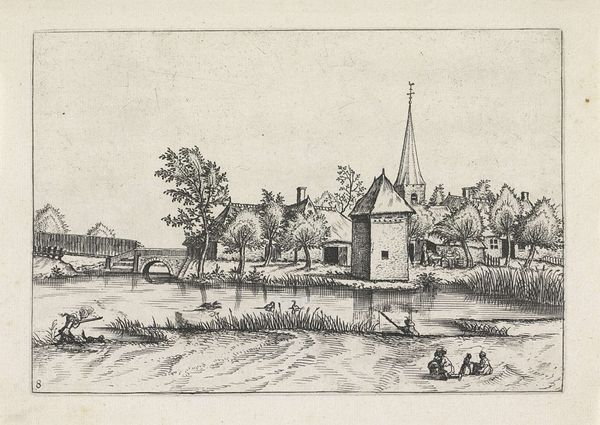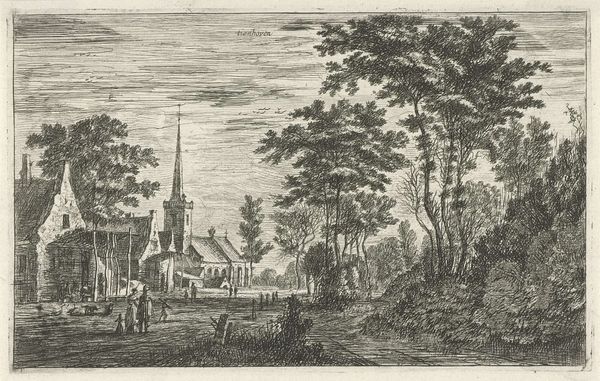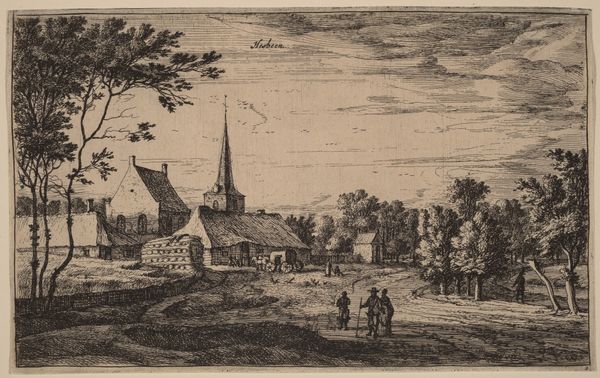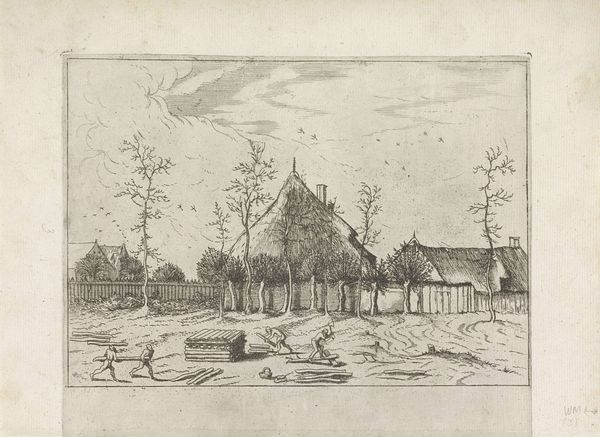
Gezicht op de Sint-Willibrorduskerk te Klein-Zundert c. 1643 - 1677
0:00
0:00
roelantroghman
Rijksmuseum
#
landscape illustration sketch
#
quirky sketch
#
mechanical pen drawing
#
pen sketch
#
pencil sketch
#
dog
#
old engraving style
#
personal sketchbook
#
pen-ink sketch
#
pen work
#
fantasy sketch
Dimensions: height 124 mm, width 205 mm
Copyright: Rijks Museum: Open Domain
Editor: This is "Gezicht op de Sint-Willibrorduskerk te Klein-Zundert" by Roelant Roghman, created sometime between 1643 and 1677. It’s currently housed in the Rijksmuseum. It's a very detailed pen sketch, and I’m struck by the almost casual way he captured this church amidst such ordinary, everyday scenery. How do you interpret this work, given its historical context? Curator: Well, what I see here is not simply a depiction of a church, but a statement about power and community in 17th-century Netherlands. Roghman situates this religious structure within a landscape populated by ordinary figures – people with their dogs, going about their lives. Consider the historical backdrop. The Dutch Republic was asserting its independence, and religious identity was deeply intertwined with political and social struggles. How does this domestic tranquility contrast with the backdrop of religious and political turmoil of the era? Editor: It’s a good point, the peace seems almost...performative? Almost like it is propaganda in favor of maintaining status quo at a time of upheaval. Curator: Precisely! Roghman might be subtly reinforcing the established order, normalizing the Church's presence in everyday life, or perhaps just illustrating daily life as it continues regardless of political upheaval. Think about whose stories were being told and whose were being silenced. It makes you question the social narratives being woven, even within seemingly innocuous landscapes. Editor: So, it's not just a pretty landscape, but a commentary on power, religion, and everyday life during a pivotal time. Curator: Exactly. It shows how deeply intertwined art is with social and political discourse, subtly shaping and reflecting the world around it. I hadn't quite looked at it from the performative angle before.
Comments
No comments
Be the first to comment and join the conversation on the ultimate creative platform.
